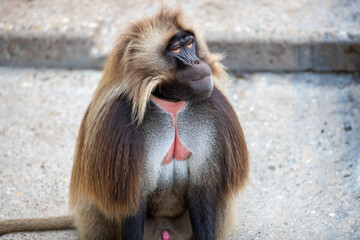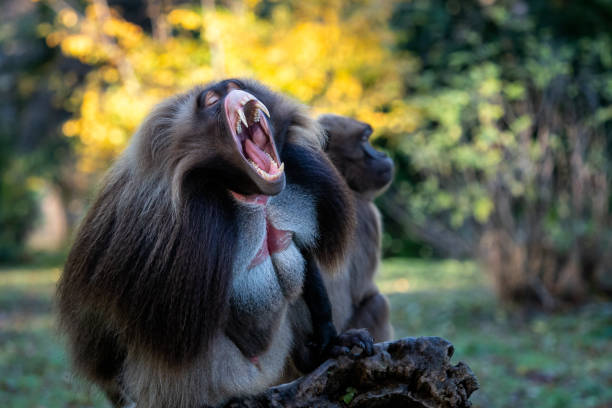Table of Contents
Introduction
The Gelada, or “bleeding-heart monkey,” has a unique chest patch. It is a remarkable primate, endemic to the Ethiopian Highlands. This species is the last of the genus Theropithecus. It thrived for millennia in the high-altitude regions of East Africa. Geladas have complex social structures and unique diets. They are a link to the ancient evolution of primates.
Scientific Classification
| Category | Details |
| Kingdom | Animalia |
| Phylum | Chordata |
| Class | Mammalia |
| Order | Primates |
| Family | Cercopithecidae |
| Genus | Theropithecus |
| Species | Theropithecus gelada |
Physical Description
Geladas are easy to identify. They have a thick mane of hair, especially in males. They also have a bright red, hourglass-shaped patch of skin on their chest. This chest patch is key to their social interactions. Its intensity can change with the animals’ emotions. Males usually have a weight ranging from 18 to 30 kilograms. Females are smaller, at 11 to 14 kilograms. Their dark brown fur insulates against the cold of their mountainous home. Their faces are smooth and hairless. They have short muzzles that help them eat grass.
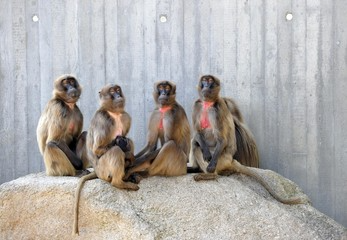
Range & Distribution
Geladas are endemic to the Ethiopian Highlands. Their range is mostly located in the central and northern parts of the country. The Simien Mountains, a UNESCO World Heritage site, host the largest populations. Smaller groups live in the Menz Guassa Community Conservation Area and other highlands. These areas have steep cliffs and wide grasslands. They provide the Geladas with the resources they need to survive.
Habitat
Geladas inhabit montane grasslands at elevations ranging from 1,800 to 4,400 meters. These high-altitude areas are often misty and have extreme temperature swings. Geladas prefer open meadows for daytime grazing. At night, they sleep on steep cliffs to avoid predators. Their success in these harsh conditions proves their unique adaptations and resilience.
Diet
Geladas are unlike any other primate. They are primarily graminivorous, meaning they eat mostly grass. They spend up to 70% of their day grazing. They use their dexterous fingers to pluck individual blades of grass. Their molars grind tough plant fibers. Their long intestines digest their fibrous diet. Geladas eat mostly grass. They also consume seeds, flowers, and some roots or insects.
Behavior and Lifestyle
Geladas are social animals. They live in bands of up to 600. In these bands, smaller groups called harems form. Each harem has a dominant male. He controls a group of females and their young. Social interactions in these units are complex. A wide range of vocalizations, facial expressions, and body postures facilitates them.
One of the most fascinating aspects of Gelada behavior is their vocal communication. They have a rich vocal range. They also use a unique “lip-smacking” gesture. This gesture may be an early form of human speech. This communication is vital for maintaining social bonds and hierarchies in their groups.
Lifespan
In the wild, Geladas live 15 to 20 years. Some may live longer in captivity. Predation, disease, and food availability affect their lifespan. In protected, low-pressure places, Geladas can live into their late twenties.
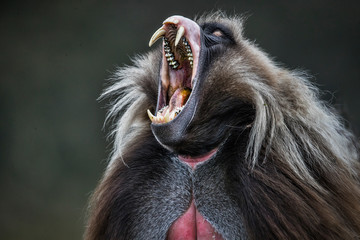
Adaptations
Geladas have evolved key adaptations. They allow them to thrive in the harsh Ethiopian Highlands. Their thick fur keeps them warm in the cold. Their nimble fingers and special teeth help them eat grass. Their social structure includes large, multi-level societies. It lets them manage resources and protect against predators.
Reproduction and Lifecycle
Gelada reproduction is closely tied to their social structure. In a harem, the dominant male has exclusive breeding rights. Younger males often challenge him. If a new male takes over a harem, he may commit infanticide to bring the females back into estrus more quickly. Females give birth to a single offspring after a gestation period of about six months. The young depend on their mothers for their first year. Then, they gradually gain independence. They learn to navigate the challenges of their highland habitat.
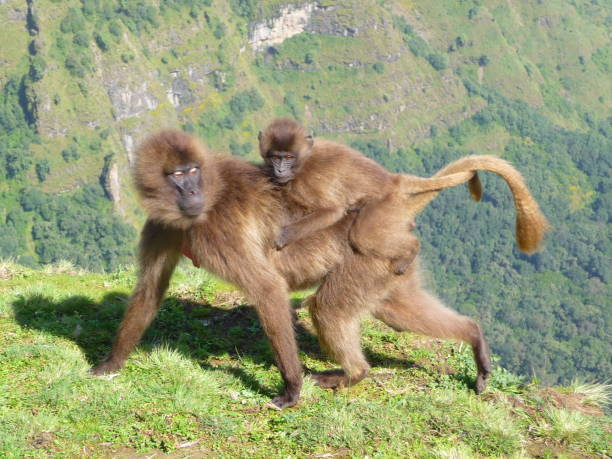
Conservation Status
The International Union for Conservation of Nature (IUCN) classifies the Gelada as “Least Concern.” But this status doesn’t truly show the threats they face. Habitat loss due to agricultural expansion and human encroachment remains a significant concern. Additionally, climate change poses a long-term threat to their high-altitude ecosystems. Efforts to save this unique species are ongoing. They focus on the Simien Mountains National Park and other protected areas.
Interesting Facts
- Geladas are the only primates that mainly eat grass. That’s a diet typical of ungulates like cattle and antelope.
- Their social structure is among the most complex of any non-human primate. Their bands have multiple levels of organization.
- The bright red patch on their chest shows health and dominance. It is key to their social interactions.
- Geladas spend more time foraging than any other primate, dedicating up to 70% of their day to feeding.
- Their communication is very sophisticated. They use 30 distinct sounds for social interactions.
